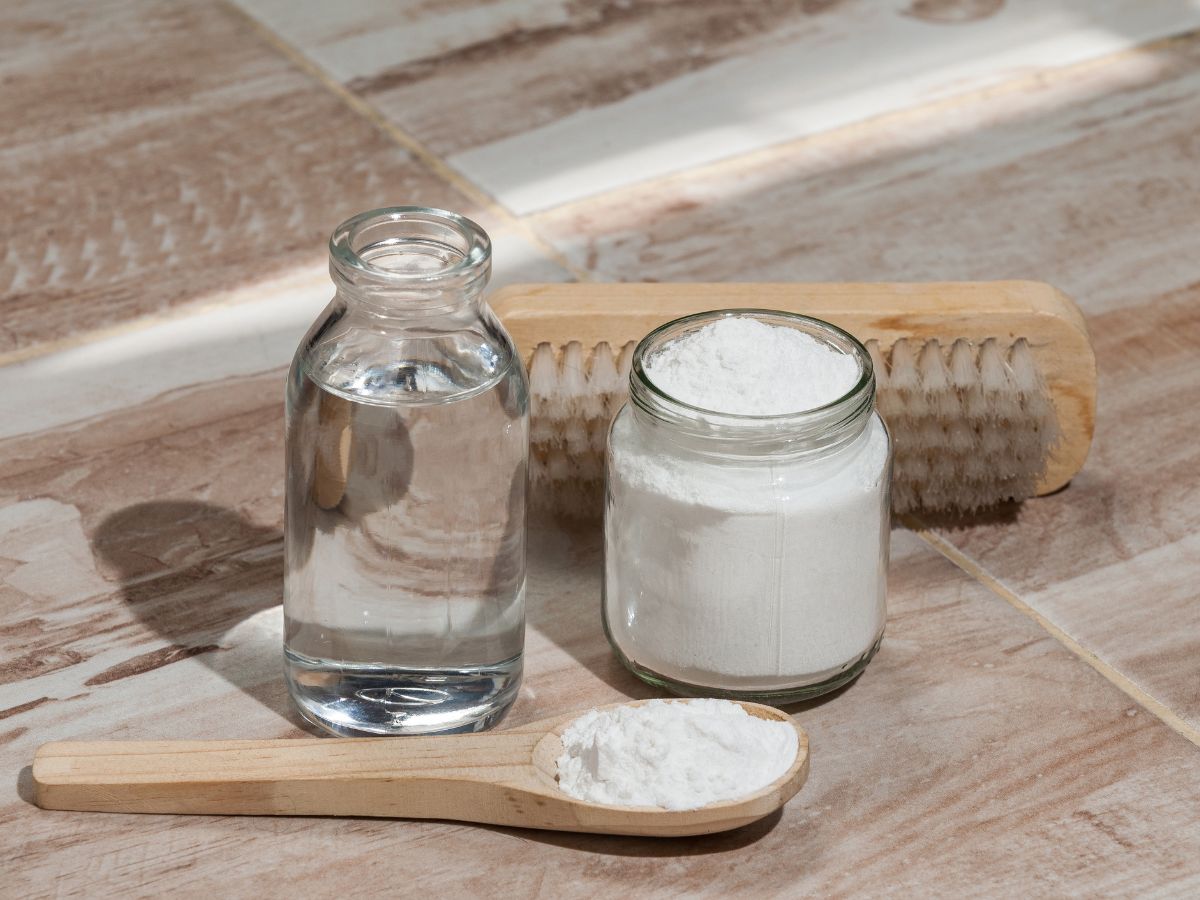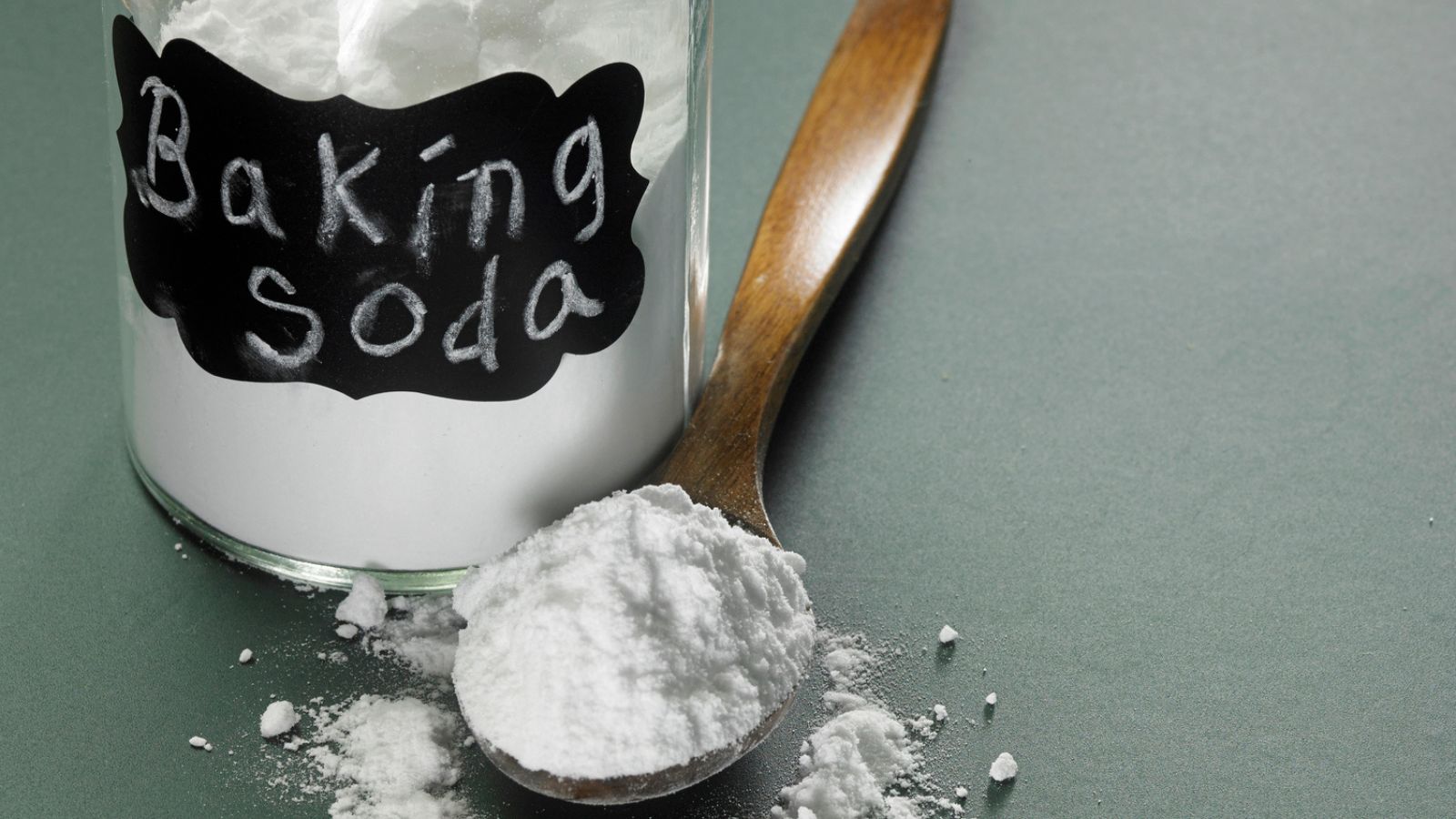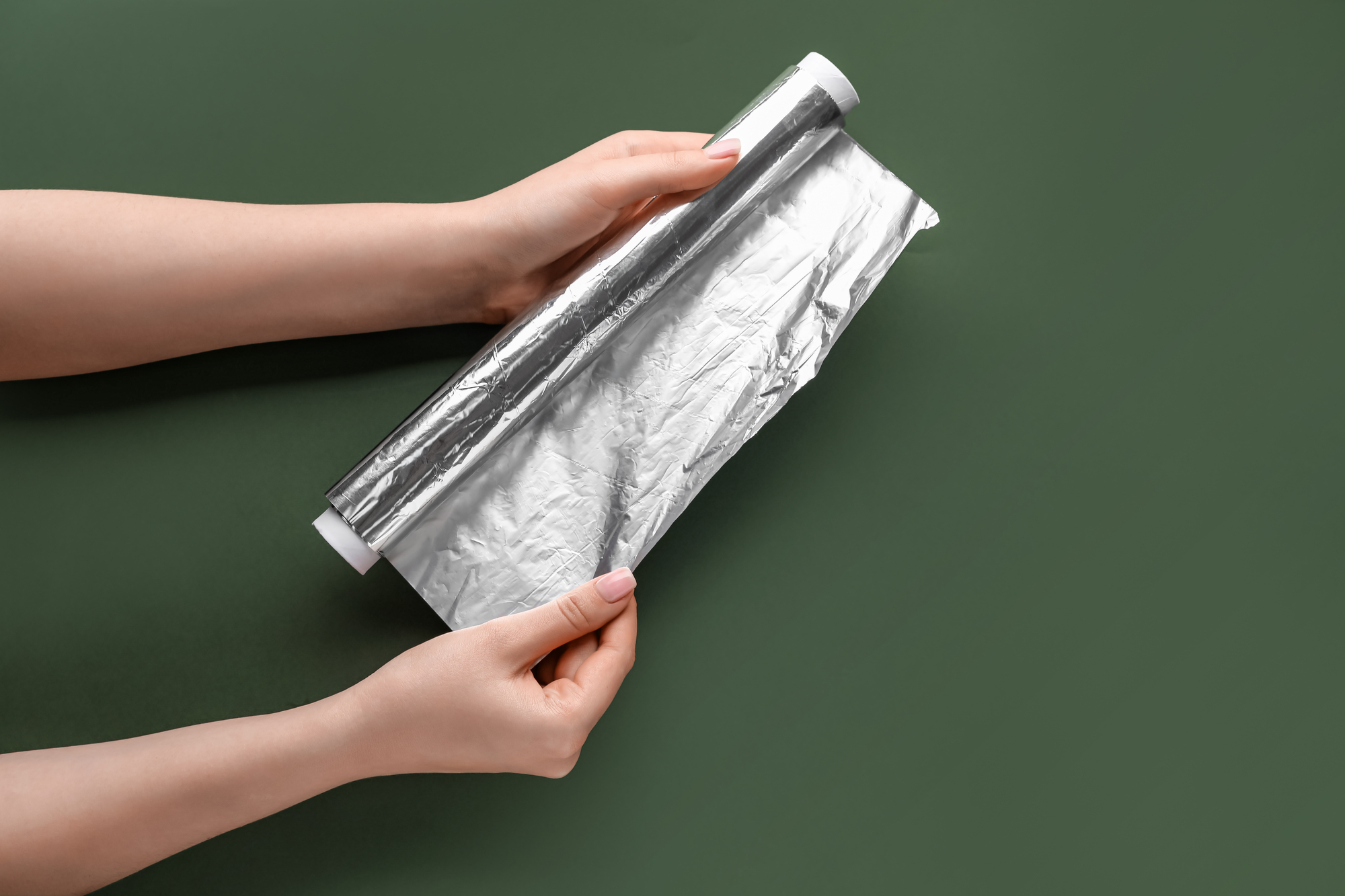This post may contain affiliate links.
It may sound counterintuitive to clean your dishwasher, but the truth is, cleaning your dishwasher is vital in maintaining its performance and keeping your dishes consistently clean.
While a dishwasher’s main function is to clean dishes, over time, bits of food particles, dirt, and mineral deposits can accumulate inside of the dishwasher, leading to unwelcomed smells, crappy performance, and potential problems with drainage. By regularly cleaning your dishwasher, you can avoid some of these issues and use it to its full potential.
So if you are tired of dishes coming out dirty, drinking glasses appearing cloudy, and that unpleasant odor lingering in the kitchen, this step-by-step guide will show you the best way to improve your dishwasher’s performance using vinegar and baking soda.
Get ready to be amazed by the power of vinegar and baking soda.

This post may contain affiliate links, which means I will earn a small commission if you purchase through my link. Please see the full disclosure and privacy policy for more information.
Step-by-Step Guide – How to Clean the Dishwasher
Supplies Needed
- A toothbrush or Soft-bristle brush
- Vinegar
- Baking Soda
- Dawn dish soap
- Rag or Paper Towel
- Bucket or sink
Step 1: Remove all items from the Dishwasher
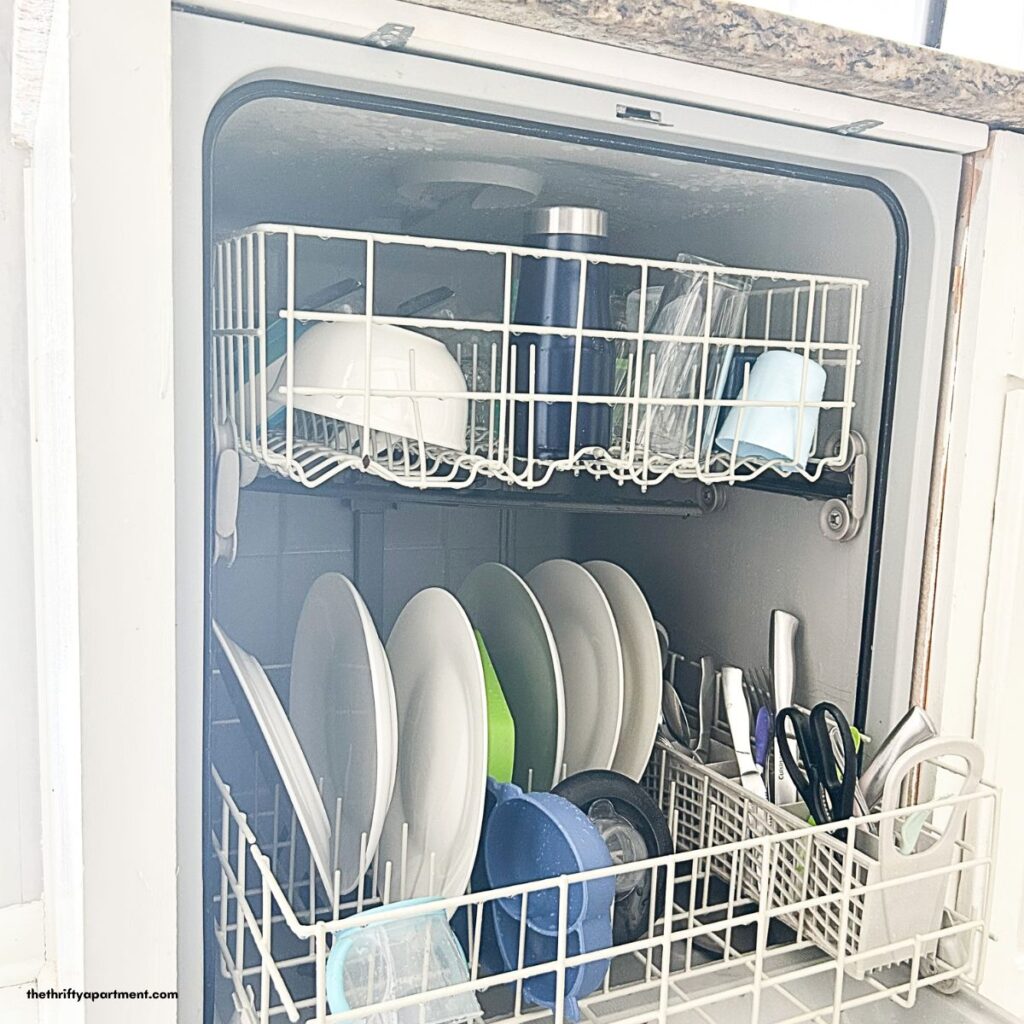
The first step is to empty the dishwasher by removing all dishes and utensils from the dishwasher.
Remove and clean the filter separately in a bucket or kitchen sink. You can find the drain filter below the bottom rack of the dishwasher.
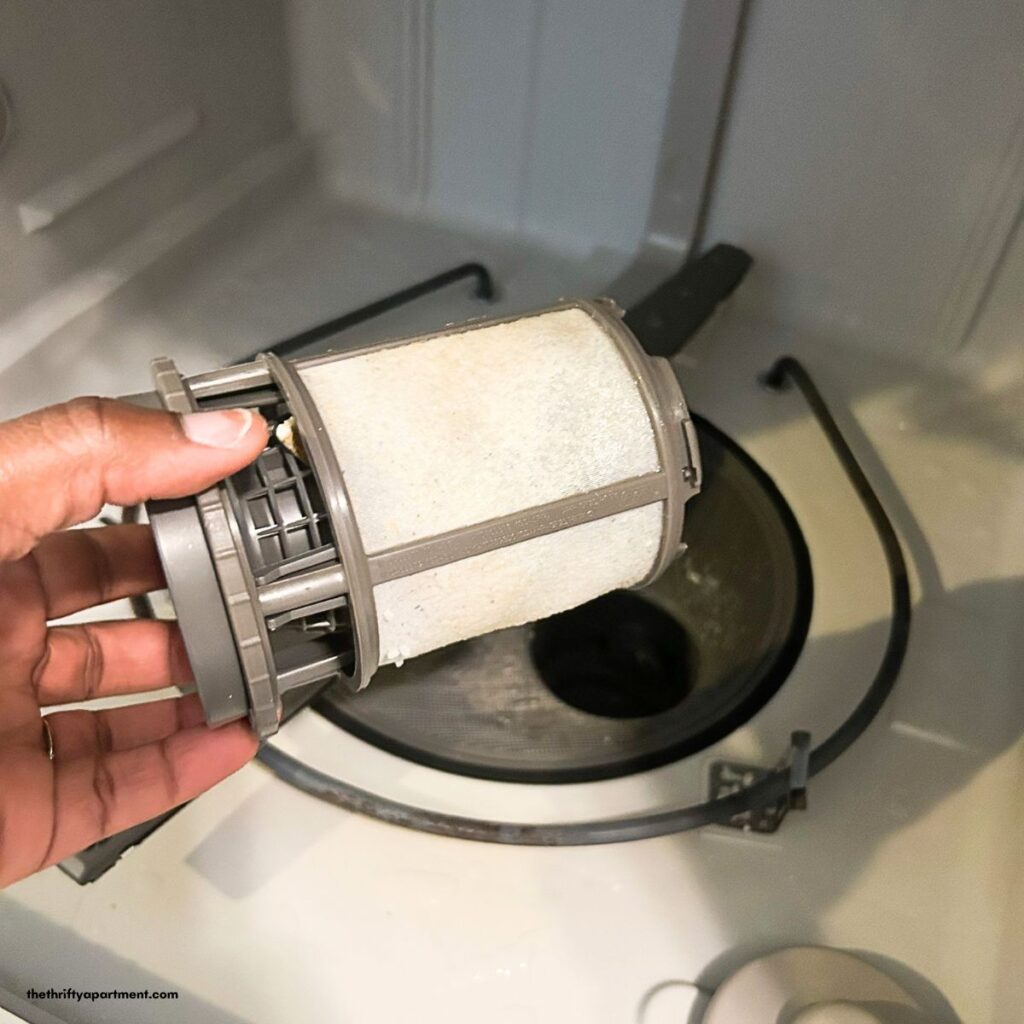
Step 2: Remove large food particles
Use a paper towel to remove large food particles from the bottom of the dishwasher.
Inspect the drain area at the bottom of the dishwasher for any visible debris. If you see any, remove it as well.
Step 3: Wipe down the walls of the dishwasher

Create a mixture of soapy water using dish soap and warm water and use it to wipe down the walls of the dishwasher with a microfiber cloth.
Get into all the nooks and crannies of the dishwasher, including the detergent dispenser, to remove any soap scum.
Wipe down the racks and the door gaskets. It’s important to note that these areas are notorious for gathering mold and mildew.
Rinse the cloth frequently to remove dirt.
Step 4: Run a vinegar cleaning cycle
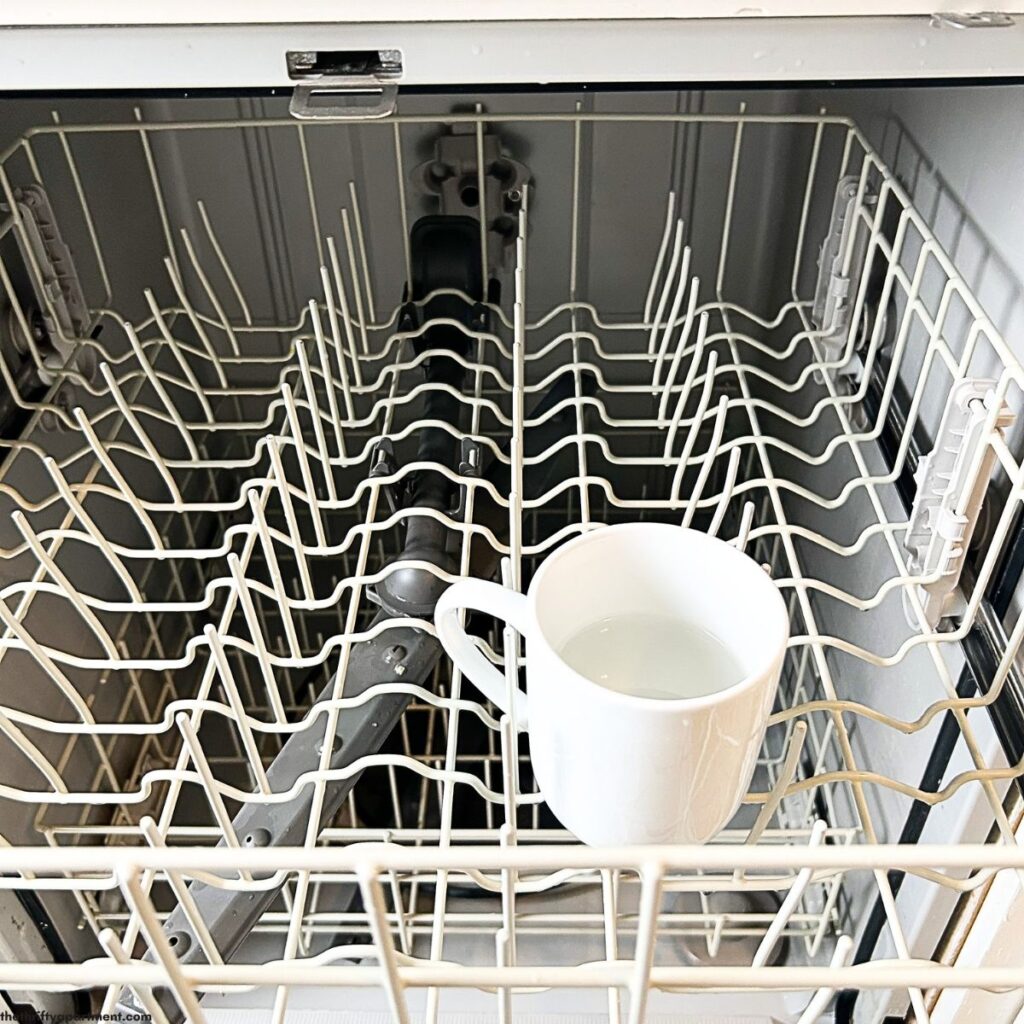
Fill a dishwasher-safe cup of white vinegar and place it on the top rack of your dishwasher.
Close the dishwasher and program it in the hottest setting. Make sure to run the hot water cycle without any other dishes.
The cup of vinegar will circulate throughout the dishwasher, cleaning and deodorizing it.
Once the hot cycle is complete, open the dishwasher, remove the cup from the top rack of the dishwasher, and inspect the interior for any remaining stains or residues. Use a cloth or sponge dipped in vinegar to spot-clean any stubborn areas.
Step 5: Run a baking soda cleaning cycle

Sprinkle a generous amount of baking soda on the bottom of your dishwasher. Then run another short cycle on the hottest setting.
The baking soda will mix with hot water and remove any lingering odors.
Step 6: Clean the exterior of the dishwasher
Wipe down the control panel, the dishwasher door, and the handle with a damp microfiber cloth. Be gentle to avoid damaging any buttons or displays. For a stainless steel dishwasher, use a stainless steel cleaner and a soft cloth to polish the front panel and other stainless steel parts.

Signs Your Dishwasher Needs Cleaning
Observing these signs will help you identify when to give your dishwasher filter some attention.
Dishes aren’t getting cleaned – One of the most common signs that your dishwasher filter needs cleaning is a decrease in cleaning performance. If you notice that your dishes are coming out dirty, have a cloudy residue, and have food particles still clinging to them, it’s a clear indication that your filter is clogged and needs a deep cleaning.
Smelly dishwasher – Another telltale sign is the presence of unpleasant odors emanating from your dishwasher. This is often caused by trapped food particles and debris that have started to rot and produce a foul smell. A strong and unpleasant smell coming from your dishwasher indicates the presence of bacteria or mold. This can be caused by food debris stuck in hard-to-reach areas or a dirty filter.
Slow drainage or a pool of water in the dishwasher could be due to a clogged filter. If you notice that water is taking longer than usual to drain from your dishwasher, it may be due to clogged filters or debris blocking the drain.
Ways to Ensure the Dishwasher Operate Efficiently
- Avoid overloading your dishwasher – scrape off excess food from dishes before loading them.
- Run your dishwasher with a full load whenever possible to maximize water and energy efficiency.
- Clean the dishwasher on a monthly basis to ensure it continues to operate effectively.
- Run hot water before starting a dish cycle.
- Clear out the garbage disposal – most dishwashers drain through the garbage disposal.
Why should you clean your dishwasher?
Keeping your dishwasher clean and well-maintained is essential for several reasons. A clean dishwasher ensures your dishes come out spotless and residue-free. Over time, food residue, grease, and mineral deposits can build up inside your dishwasher, leading to poor cleaning performance and leaving unsightly spots on your dishes. Regular cleaning and maintenance help prevent these issues and keep your dishwasher functioning optimally.
In addition, cleaning your dishwasher regularly can extend its lifespan. Like any other appliance, dishwashers can accumulate dirt and mineral deposits that can cause damage and wear down the internal components. Following a proper cleaning routine can prevent costly repairs and ensure that your dishwasher lasts many years.
Lastly, a clean dishwasher is more hygienic. If improperly cleaned, a dishwasher’s warm and damp environment can be a breeding ground for bacteria and mold. Regular maintenance keeps your dishwasher smelling fresh and helps eliminate any potential health hazards.
Why does your dishwasher smell?
The main reason why your dishwasher smells is that food residue and particles get trapped, decompose, and rot, producing a foul smell. A smelly dishwasher could also suggest that there is some presence of bacteria or mold. This can be caused by food debris stuck in hard-to-reach areas or a dirty filter.
Why use vinegar and baking soda to clean the dishwasher?
Vinegar and baking soda are well-known kitchen staples that aren’t just for cooking and cleaning. These kitchen staples also work wonders in rejuvenating and cleaning your dishwasher.
Vinegar and baking soda are both natural cleaning agents that are safe to use in your dishwasher. Vinegar is a mild acid that can dissolve mineral deposits and remove grease and stains. It also has antibacterial properties that help eliminate odor-causing bacteria.
Baking soda, on the other hand, is a natural deodorizer and abrasive cleaner. It can break down tough stains, remove lingering odors, and leave your dishwasher fresh and clean.
They are both highly effective in removing mineral deposits, grease, and stains that may affect your dishwasher’s performance.
Additionally, they can help eliminate musty odors and leave your dishwasher smelling refreshed. The best part is that they are readily available in most households, making them a cost-effective solution for improving your dishwasher’s performance.
How often should you clean your dishwasher?
The dishwasher should be cleaned monthly. The exterior of the dishwasher should be wiped down weekly.
I hope you have found these simple steps helpful. Vinegar and baking soda are powerful allies when cleaning a dishwasher. These simple household ingredients can leave your dishwasher sparklingly clean and fresh.
Posts you might like:
- How to Clean a Microwave
- How to Clean a Porcelain Kitchen Sink
- How to Clean a Coffee Maker with Vinegar
Please comment below to let me know what you think of this article. Feel free also to follow me on my social media pages – Pinterest and Instagram or subscribe to my mailing list for other design inspiration, DIY projects, and home decor ideas.
Tamara White is the creator and founder of The Thrifty Apartment, a home decor and DIY blog that focuses on affordable and budget-friendly home decorating ideas and projects. Tamara documents her home improvement journey, love of thrifting, tips for space optimization, and creating beautiful spaces.



